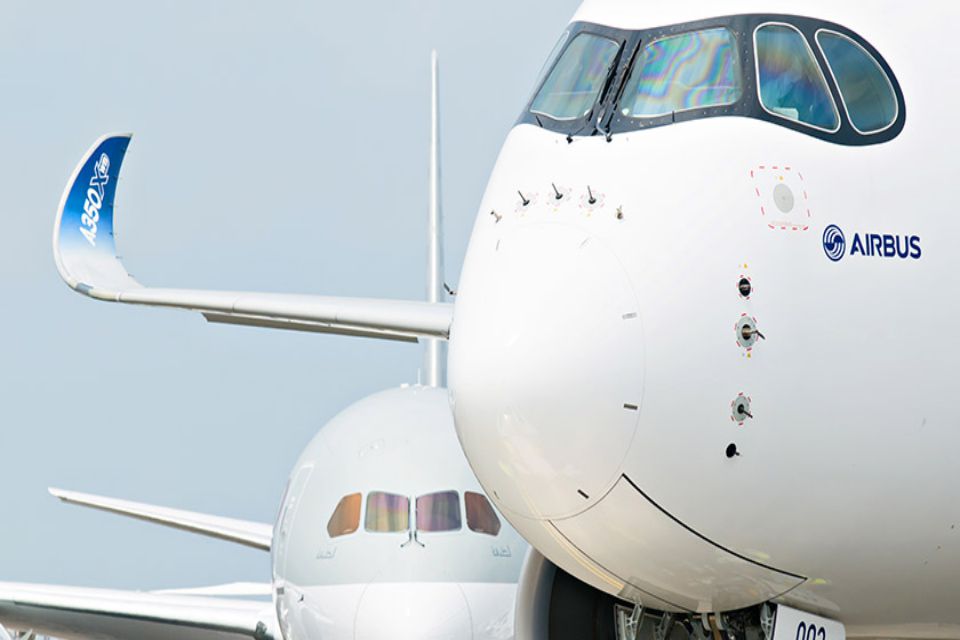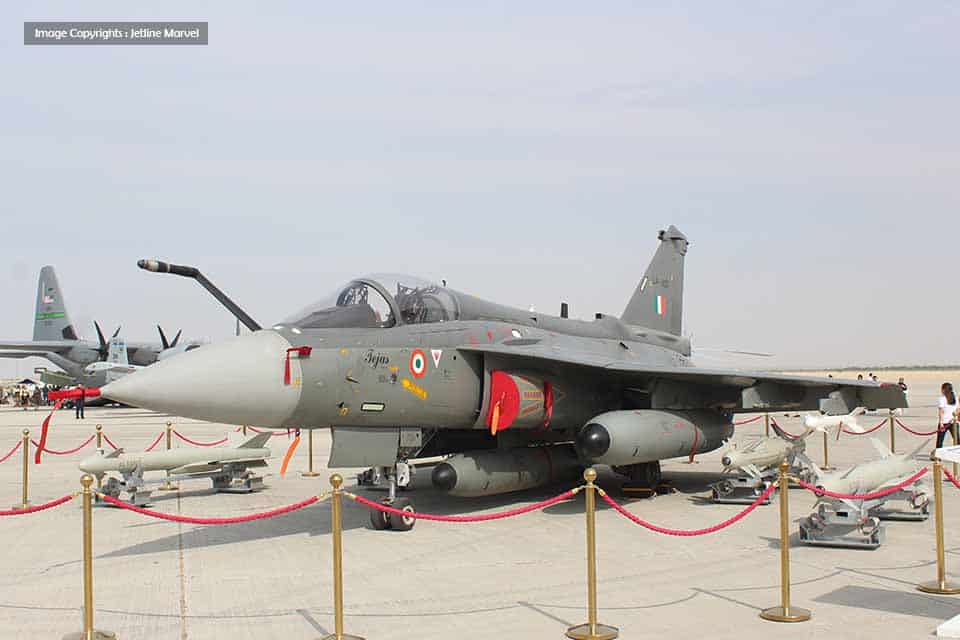Aviation
Airbus to showcase ‘Future of Flight’ at Dubai Airshow 2019

Dubai, 11 November 2019 – At the Dubai Airshow, which runs from 17-21 November 2019, Airbus will showcase its wide range of innovative technologies, products and services from market leading commercial and military aircraft to helicopters and space systems.
The Dubai Airshow is an important platform for Airbus to highlight its best-in-class products and innovative services to customers. Airbus’ continued participation at the largest aviation event in the Middle East demonstrates its continuous commitment to enhancing the aerospace and aviation industries in the UAE and wider region.
Static & flying displays
On the static display, visitors will be able to get up close to Airbus’ range of commercial aircraft. This includes the A350-900, the cornerstone member of the A350 XWB Family, Salam Air’s A320neo, from the world’s most popular single-aisle aircraft family, as well as EGYPTAIR’s A220-300, the newest member of the Airbus single-aisle family. Airbus will also display an ACJ319 from K5 Aviation, highlighting the comfort and space on offer, and echoing the trend towards larger cabins in new-generation business jets. An ACJ319, operated by K5 Aviation on VVIP charters, will highlight the widest and tallest cabin of any business jet. Airbus corporate jets have a strong presence in the Middle East market with both the ACJ320 Family and VVIP widebodies.
flydubai participates at the Dubai Airshow with one of its Boeing 737 MAX 8 aircraft
In the customers’ display, Emirates Airline and Etihad Airways will showcase their A380s, giving the opportunity to tour the popular double-decker and see its award-winning products across all classes.
The daily flying display will include the A330-900, a variant of the Airbus A330neo, as well the A400M airlifter.
Airbus Helicopters will display Kuwait Police’s H225, tailored to the specifications of the Kuwaiti police force. The 11-tonne twin-engine helicopter is the choice of commercial operators and governmental agencies due to its long range and all-weather capabilities.
World Guinness record by Tesla pulls Qantas Boeing 787-9
Meanwhile, Airbus Defence and Space will present the A400M new generation airlifter and the highly versatile C295 military transport and mission aircraft as well as the A330 MRTT, “Multi-Role Tanker-Transport”, the only combat-proven new-generation tanker.
As the official founding partner of Air Race E, Airbus will present the first example of an electric race plane scheduled to compete in the world’s first electric airplane race series launching in 2020. The competition will drive the development of cleaner, faster and more technologically advanced electric engines that can be applied to urban air mobility vehicles and eventually, commercial aircraft.
First E175-E2 Jet Completes its Maiden Flight
At the Global Air Traffic Management show in the exhibition hall, booth 157, Airbus UTM and Airbus companies Metron Aviation and NAVBLUE will demonstrate how Airbus is helping the Air Traffic Management industry minimise delays, reduce fuel costs and balance demand and capacity through Air Traffic Flow Management (ATFM).

Aviation
Tejas and C-390 Millennium: India and Brazil’s Defense Trade Vision

India and Brazil are exploring a mutually beneficial deal to enhance their defense product exports. There are indications that this potential agreement could include the exchange of fighter jets, essentially functioning as a barter system. For example, India has a long-standing offset policy requiring foreign defense companies to reinvest a portion of their contract value back into India through technology transfer or other reciprocal benefits.
Many countries engage in such exchanges to support each other’s defense industries, thereby strengthening national policies and economies. A notable example is the barter deal between South Korea and Indonesia, where South Korea sold its T-50 jets to Indonesia in return for defense-related goods and trade advantages.
India-Brazil defence mutual benefits
If the India-Brazil deal comes to fruition, it could provide mutual benefits, as both nations are in need of advanced platforms. Brazil is well-known for its Embraer aircraft, which ranks as one of the top three manufacturers of private and commercial jets. However, Brazil lacks expertise in fighter jet production, and this deal could provide the exposure needed to enter the fighter jet market.
In 2014, Brazil made a significant purchase of 36 Gripen fighters, with deliveries expected by 2027. Brazil is also producing Gripen fighter jets at its Embraer plant, with SAAB and Embraer collaborating to enhance the performance of the Gripen aircraft further.
India Faces Shortage of Military Aircraft Materials
Currently, India faces a shortage of medium military transport aircraft and is seeking to acquire more. The C-130J and C-17 Globemaster, along with the Russian IL-76, are currently in service. However, the production of the C-17 has been halted, making it unavailable in the market, while the IL-76 is experiencing maintenance challenges due to a shortage of spare parts.
Air India Might Operate Tata-Made New Airbus C295 Aircraft
India is currently seeking a reliable partner for military transport aircraft, and the Embraer C-390 Millennium stands out as an ideal fit. If a deal between Brazil and India materializes, it could yield significant benefits for both nations.
Embraer C390 payload capacity
The Brazilian Air Force is the largest in the Southern Hemisphere and the second largest in the Americas. Embraer proudly presents the C-390 Millennium as the future of military transport aircraft, featuring a payload capacity of 26,000 kg. This makes it a compelling choice, especially since it outperforms the C-130J Super Hercules, which has a payload capacity of 19,000 kg. Given India’s interest in enhancing its military capabilities, it’s clear why experts believe that discussions around this aircraft could lead to a significant agreement.
This international airline is offering free flight tickets to Indian travelers
Brazil operates the Gripen E fighter jet, which is expected to expand its fleet in the near future. However, the Tejas fighter jet has certain advantages over the Gripen. For instance, the Tejas features a quadruple digital fly-by-wire system that offers greater redundancy and safety compared to the single FBW system in the Gripen. Additionally, its use of composite materials reduces its radar cross-section, and its wide duct air intake enhances performance. Notably, the Tejas can take off in as little as 460 meters, significantly shorter than the Gripen’s 800-meter requirement.
Tejas and Gripen E Engine
Both jets are equipped with advanced avionics and electronic warfare systems, but the Gripen does hold some advantages with its more powerful GE F414 engine. The Gripen has a better payload capacity and maximum takeoff weight, and the optimized F414 engine provides superior thrust, enhancing agility and aerial engagement capabilities. However, the F404 engine of the Tejas is cheaper to maintain and operate compared to the F414.
With a maximum capacity of 26 tonnes, the C-390 surpasses the C-130’s 19-tonne capacity. Additionally, the C-390 is equipped with both probe and drogue systems, allowing it to refuel fighter jets and even serve as a tanker—capabilities that the C-130J does not offer. If India and Brazil decide to collaborate on the C-390’s production, it could be a game-changer for both nations.
India could potentially modify the C-390 aircraft for combat roles, such as launching long-range subsonic cruise missiles. This adaptation is feasible, as evidenced by the U.S. using its MC-130 to launch AGM-158 missiles.
India’s collbration with TATA & Airbus C295
Currently, India, in collaboration with Airbus, is producing around 56 aircraft for defense purposes. This milestone strengthens India’s defense capabilities, as spare parts will be more accessible due to local production and support. The C295 aircraft plays a crucial role in boosting regional connectivity and transporting troops and essential military supplies.
Furthermore, the C-390 could function as a drone mothership for deploying India’s swift and stealthy drones, providing a cost-effective solution that maximizes operational capabilities. However, challenges related to self-survivability, precision strikes, and operations in contested environments need to be addressed. If these challenges can be resolved, this concept could significantly enhance India’s long-range strike capabilities.
Similarly, manufacturing the Tejas MK1 in collaboration with Brazil would bring substantial benefits, especially for Brazil. Their mutual membership in BRICS could foster deep cooperation, defense technology sharing, and industrial development. By partnering on the Tejas program, Brazil’s aerospace industry could enter the fighter aircraft segment, leading to advancements in knowledge transfer and the establishment of local supply chains.
Reducing reliance on India for fighter maintenance and support, the C-390 Millennium would significantly enhance India’s logistical and operational capacity. Meanwhile, the Tejas MK1A offers Brazil an affordable yet effective solution to bolster its air combat capabilities, further deepening the strategic ties between the two nations.
-

 Aviation2 months ago
Aviation2 months agoMicrosoft Flight Simulator Raises $3 Million to Bring Back the An-225 Mriya
-

 Airlines2 months ago
Airlines2 months agoQatar Citizens Can Travel to the United States Without a Visa
-

 Aviation2 months ago
Aviation2 months agoQatar Airways bans these new Electronic Devices on plane
-

 Defence2 months ago
Defence2 months agoWhich Country Has the Largest Fleet of Fighter Aircraft?
-

 Airlines6 days ago
Airlines6 days agoDAMAC Air: Dubai’s New Luxury Airline Offers Free Flights for Registration
-

 Airport2 months ago
Airport2 months agoWestern Sydney Airport Welcomes Its First Plane After 6 Years of construction
-

 Airlines5 days ago
Airlines5 days agoAir India to Launch aircraft maintenance training institute in Bengaluru
-

 Aviation2 months ago
Aviation2 months agoDid you know ? Once Boeing 747 carried 1088 passenger in 1991








